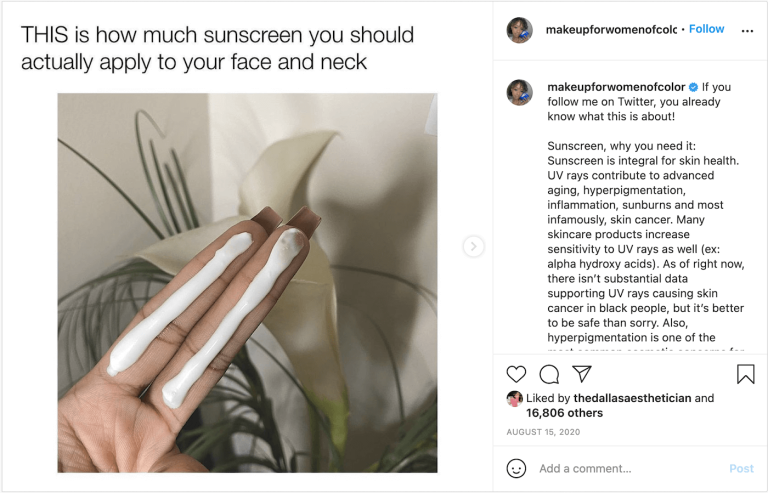How it works:
Share your skin goals and snap selfies
Your dermatology provider prescribes your formula
Apply nightly for happy, healthy skin
How it works:
How it works:
Share your skin goals and snap selfies
Your dermatology provider prescribes your formula
Apply nightly for happy, healthy skin
How it works:
The two finger rule for sunscreen
This sun protection hack is simple — but does it work?



The two finger rule is an SPF application method that involves squeezing sunscreen along the length of two (2) fingers and applying it all over one section of your body, like your face/neck. Simply squirt enough to cover the expanse from the crease of your palm to the tip of your index and middle fingers, slather yourself down, and repeat!
Overexposure to the sun’s harmful rays can damage your skin. It can potentially cause certain types of skin cancer, and it’s also to blame for many signs of aging. So it’s important to not only wear sunscreen, but to apply it correctly. Most people only apply 25%-50% of the recommended amount of sunscreen — and under application leaves your skin vulnerable to UV damage.
We’ve written about how much sunscreen to apply on the blog before: for the face, a dollop the size of a large pea, and for the body, about enough to fill a shot glass (or two tablespoons). And yet, even with these guidelines, I still struggle with visualizing the correct amount of SPF to layer on my entire body.
I like the two finger rule because, to me, it’s a crystal clear visual guide: your digits are hotdogs and your SPF is mustard.
So when I first heard about this sunscreen application method via Tiara Willis (aka Makeup for WOC on Twitter and Instagram), I was hyped. When I did a little digging, I was surprised to learn that, even though the two finger rule might seem like a new trend, it’s actually been around for a while!

The origins of the two finger rule
Even though the two finger method is currently trending, it seems that this sunscreen application tip originates from a dosage guide published in 2002. According to researchers, you should be applying two fingers worth of sunscreen to eleven different “sections” of your body:
Your head, face, and neck
Left arm
Right arm
Upper back
Lower back
Chest (upper torso area)
Stomach (lower torso area)
Left upper leg and thigh
Right upper leg and thigh
Lower left leg and foot
Lower right leg and foot
The researchers refer to this division as “the rule of nines,” since each section represents about 9% of your body. I know that might be confusing — lots of numbers and body parts are in the mix!
The two finger rule is just one method of generously applying sunscreen so that you get adequate coverage — there is more than one right way to do it. Seeking shade and wearing sun-blocking clothing (like sunglasses and wide-brimmed hats) can also help to protect you from UV rays.
Whether or not you choose the two finger method, applying (and re-applying) sunscreen is an essential step to maintaining your skin’s health. Again, even two finger-lengths of sunscreen still isn’t enough to protect your entire body — just one part of your body (like your face and neck). No matter what technique you use, the experts agree: don’t be shy when layering up with your favorite body lotion or face moisturizer with SPF!

Still not sure how much sunscreen you should actually be applying to your face? Check out this handy guide below, which also includes recommendations on how much Curology product to apply to your face, too:

Want more sunscreen recommendations from our team of skincare experts? Find a sun protection guide for every type of skin below:
For expert consultations and a routine to fit your skin’s unique needs, sign up for a free trial of Curology. You’ll be paired with a medical provider who will prescribe you a custom formula to treat skin concerns like acne and signs of aging, and you can complete your routine by adding on any other product (like the cleanser and moisturizer) at no extra cost. Your first month is just $4.95 (plus tax) to cover the cost of shipping and handling.
We’re here to tell you what we know. That’s why our information is evidence-based and fact-checked by medical experts. Still, everyone’s skin is unique—the best way to get advice is to talk to your healthcare provider.
Empowering you with knowledge is our top priority. Our reviews of other brands’ products in this post are not paid endorsements—but they do meet our medically fact-checked standards for ingredients (at the time of publication).

Stephanie Papanikolas